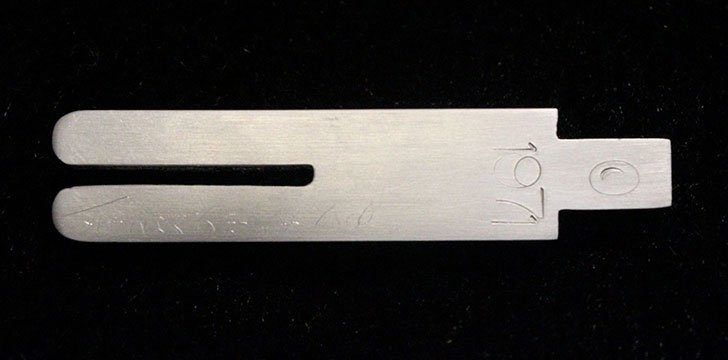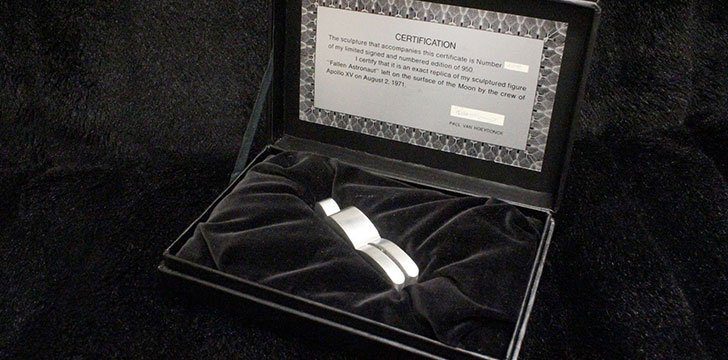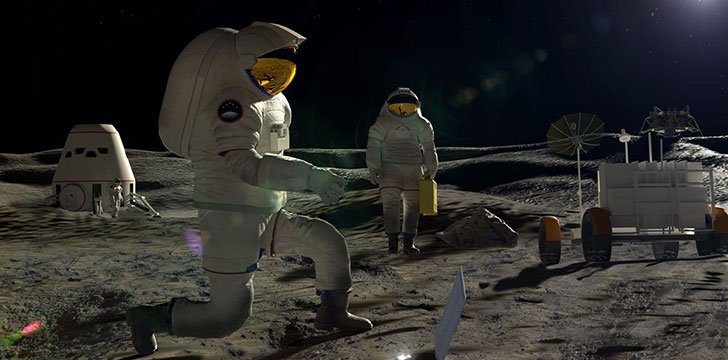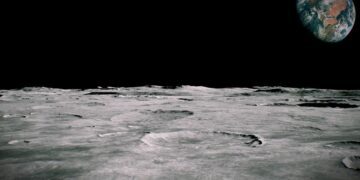On the Moon’s northern hemisphere is a place known as Hadley Rille, a sort of dry channel sitting to the west of a mountainous range.
In this Rille is a tiny sculpture of an astronaut and a little plaque with the names of 14 astronauts and cosmonauts who have died in the advancement of space exploration.
This memorial is called the Fallen Astronaut.
How did it get onto the Moon, though? Who made it? And who took it there?
The Astronaut And The Sculptor

American astronaut David Scott was attending a dinner party before his Apollo 15 lunar mission.
Here, he met Belgian painter and sculptor Paul Van Hoeydonck, and the two spoke together for a while.
Eventually, Scott asked Van Hoeydonck to create a small statuette for him to place on the Moon.
Scott wanted to commemorate all the astronauts and cosmonauts who had died pursuing the betterment of space exploration to date.
Scott gave Van Hoeydonck a set of design specifications: the sculpture had to be lightweight and able to withstand the Moon’s temperature extremes.
This ranges from 260°F down to -280°F.
And it couldn’t be identifiably male or female or be any identifiable ethnicity.
Separate from the sculpture, Scott designed and created a plaque listing the fourteen American and Soviet star sailors.
This included the first man in space, Yuri Gagarin – who had died up until that point.
According to Scott, Van Hoeydonck’s name was not to be made public, so that he couldn’t commercially exploit the U.S. government’s space program, in accordance with NASA’s policy.
Scott got permission from NASA’s top tier of management to take the small sculpture to space with him, although he kept this a secret until after he returned from his mission.
Apollo 15 And Scott’s Secret Side Mission

On August 1, 1971, Scott was nearing the end of his mission on the Moon’s surface when he secretly placed the Fallen Astronaut sculpture and the commemorative plaque on the bed of a dry channel.
He photographed the memorial and publicly announced it at his post-mission press conference.
Later, Scott noted that two Soviet names were missing from the plaque due to the secrecy of the Soviet space program at the time.
Also missing was the name of Robert Henry Lawrence Jr., the first black astronaut who died in a training accident in 1967.
Controversy

One year after the crew’s press conference and their disclosure of the memorial site, Scott had learned Von Hoeydonck was planning to make and sell more of the sculptures.
Scott believed this violated the spirit of their agreement, as well as NASA’s policy about commercialization.
Scott very kindly asked Von Hoeydonck not to produce anymore, but he said no.
However, under pressure from NASA and a whole bunch of astronauts, Von Hoeydonck decided not to sell anymore – even though he did have 50 produced.
To this day, the Fallen Astronaut still stands upon the Moon’s surface, and most likely will for years and years to come, honoring all those who fell in order to us to jump closer to the stars.

















